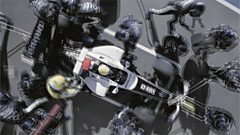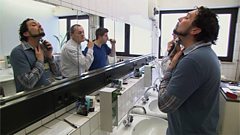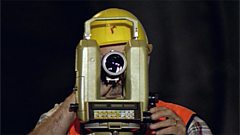
The Oxford synchrotron - the world's biggest microscope
It is the responsibility of David Rugg, a Materials Engineer at Rolls-Royce, to make the materials used in an aero engine stronger and lighter so the engines are more efficient and environmentally friendly. Rolls-Royce works with metallurgists from the University of Oxford who are using X-rays from the world's biggest microscope, the Oxford synchrotron, to probe metal components under stress and see how they deform. This allows them to modify the components to make them lighter and stronger. Includes a description of how the synchrotron generates X-rays.
Duration:
This clip is from
More clips from Episode 1
-
![]()
Engineering a Formula 1 racing car
Duration: 03:49
-
![]()
How does an electric shaver work?
Duration: 03:52
-
![]()
Digging the world's longest tunnel
Duration: 05:52
-
![]()
Innovative water features in urban design
Duration: 04:30
More clips from Engineering for the World
-
![]()
Engineering a Formula 1 racing car—Episode 1
Duration: 03:49
-
![]()
How does an electric shaver work?—Episode 1
Duration: 03:52
-
![]()
Digging the world's longest tunnel—Episode 1
Duration: 05:52
-
![]()
Innovative water features in urban design—Episode 1
Duration: 04:30





